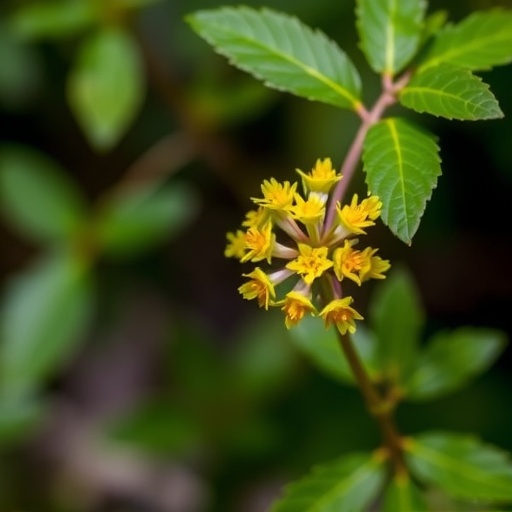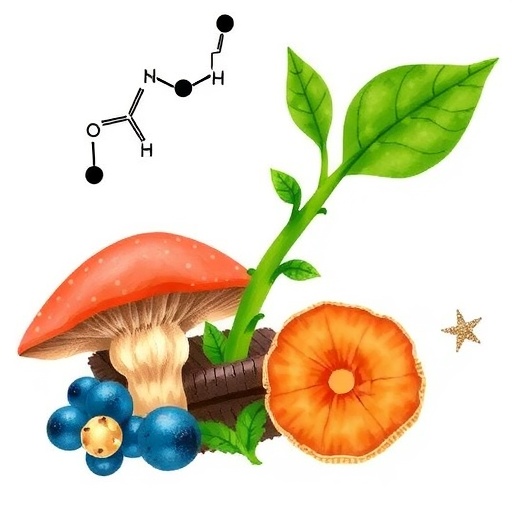
In the realm of reproductive health, a groundbreaking study has emerged that sheds light on the complex interaction between hyperandrogenism and estrogen synthesis in women diagnosed with polycystic ovary syndrome (PCOS). The research, led by Tsai and colleagues, investigates the molecular mechanisms at play within granulosa cells and opens up new avenues for understanding the underlying hormonal imbalances that characterize PCOS.
Hyperandrogenism, a condition marked by elevated levels of androgens, is often associated with PCOS, which affects a significant number of women globally. Despite being a common endocrine disorder, the intricate biological processes that contribute to the symptoms of PCOS remain elusive. This new study highlights how hyperandrogenism does not merely contribute to androgen excess but actively engages in estrogen synthesis, which can exacerbate the condition.
The researchers focused on the role of the androgen receptor (AR) and the Foxl2 transcription factor in regulating the aromatase gene, responsible for converting androgens to estrogens. This AR-FOXL2 interaction is pivotal; the study suggests that when androgens increase in granulosa cells, they stimulate an activation pathway that significantly enhances estrogen production. Understanding this relationship is vital, as elevated estrogen levels can further disrupt the delicate endocrine balance in women with PCOS, perpetuating a cycle of hormonal dysfunction.
Granulosa cells, which are essential for the development and maturation of ovarian follicles, were specifically analyzed for their response to hyperandrogenic conditions. The findings revealed that the presence of androgens activated the FOXL2 gene, which in turn modified aromatase expression, effectively increasing estrogen levels. This not only emphasizes the role of granulosa cells in hormonal regulation but also highlights a potential target for therapeutic interventions aimed at managing PCOS symptoms.
The study’s implications extend beyond the laboratory. By unveiling the pathway through which hyperandrogenism affects estrogen synthesis, it draws attention to potential novel treatment modalities that could mitigate symptoms associated with PCOS. For instance, therapies aimed at blocking the androgen receptor or modulating aromatase activity could be developed. Such targeted approaches may provide relief to millions of women suffering from the often debilitating symptoms of PCOS.
Moreover, the research emphasizes the need for further exploration into the relationship between various hormones in the body. It underscores the fact that these systems do not operate independently. Instead, they interact in complex ways, influencing one another and producing a constellation of biological effects. The overlapping functions of androgens and estrogens in ovarian physiology could pave the way for holistic management strategies in reproductive health.
The study also prompts a re-evaluation of the diagnostic criteria for PCOS. With a clearer understanding of hormonal interplay, healthcare providers may need to consider estrogen levels alongside androgens when diagnosing and treating the condition. This more nuanced approach could lead to improved outcomes for patients, ensuring they receive comprehensive care that addresses the root causes of their symptoms.
In addition to clinical implications, the findings pose important questions regarding public health strategies. Given the prevalence of PCOS across diverse populations, there is a pressing need for educational initiatives that inform women about the risks associated with hyperandrogenism and its hormonal cascade. Raising awareness of how these factors contribute to reproductive health can empower women to seek care and advocate for their well-being.
The research published in the Journal of Ovarian Research also prompts further inquiries into the lifestyle factors that may exacerbate or alleviate symptoms of PCOS. Diet, exercise, and other lifestyle modifications could be tailored based on an individual’s hormonal profile, providing a personalized approach to treatment. Thus, this study is not only crucial for researchers but also for clinicians who seek to align patient care with the latest scientific insights.
As we continue to unravel the complexities of PCOS, Tsai and colleagues underscore the importance of interdisciplinary research. By integrating insights from endocrinology, reproductive biology, and molecular genetics, the study exemplifies how collaborative efforts can lead to breakthroughs that enhance our understanding of women’s health.
In summary, the findings of this study herald a new chapter in the understanding of hyperandrogenism and estrogen synthesis in PCOS. They illuminate the molecular interactions at play and provide a foundation for future research and therapeutic strategies. As the conversation around PCOS evolves, it is imperative that both the medical community and the public engage with these insights to foster better health outcomes for women affected by this condition.
In essence, the work of Tsai et al. stands as a testament to the potential for research to transform our understanding of complex health issues. It challenges existing paradigms and encourages a comprehensive reevaluation of how we approach conditions like PCOS. As we delve deeper into the hormonal interplay at work, the possibility for improved diagnostic and treatment options grows ever closer, potentially changing the lives of countless women who navigate the challenges posed by polycystic ovary syndrome.
Subject of Research: The interaction between hyperandrogenism and estrogen synthesis in women with polycystic ovary syndrome.
Article Title: Hyperandrogenism in polycystic ovary syndrome augments Estrogen synthesis through AR-FOXL2–mediated activation of the aromatase gene in granulosa cells.
Article References:
Tsai, YR., Liao, YN., Tsai, CJ. et al. Hyperandrogenism in polycystic ovary syndrome augments Estrogen synthesis through AR-FOXL2–mediated activation of the aromatase gene in granulosa cells.
J Ovarian Res 18, 200 (2025). https://doi.org/10.1186/s13048-025-01790-4
Image Credits: AI Generated
DOI: 10.1186/s13048-025-01790-4
Keywords: Hyperandrogenism, Polycystic Ovary Syndrome, Estrogen Synthesis, Granulosa Cells, Aromatase Gene, AR-FOXL2 Interaction
Tags: androgen receptor and Foxl2 interactionaromatase gene regulation in womenelevated estrogen levels in hyperandrogenismendocrine balance in womenestrogen production in granulosa cellsgranulosa cell function in PCOShyperandrogenism and estrogen synthesismolecular mechanisms of PCOSPCOS and reproductive health researchPCOS hormonal imbalancesreproductive health and endocrine disordersTsai study on hyperandrogenism




